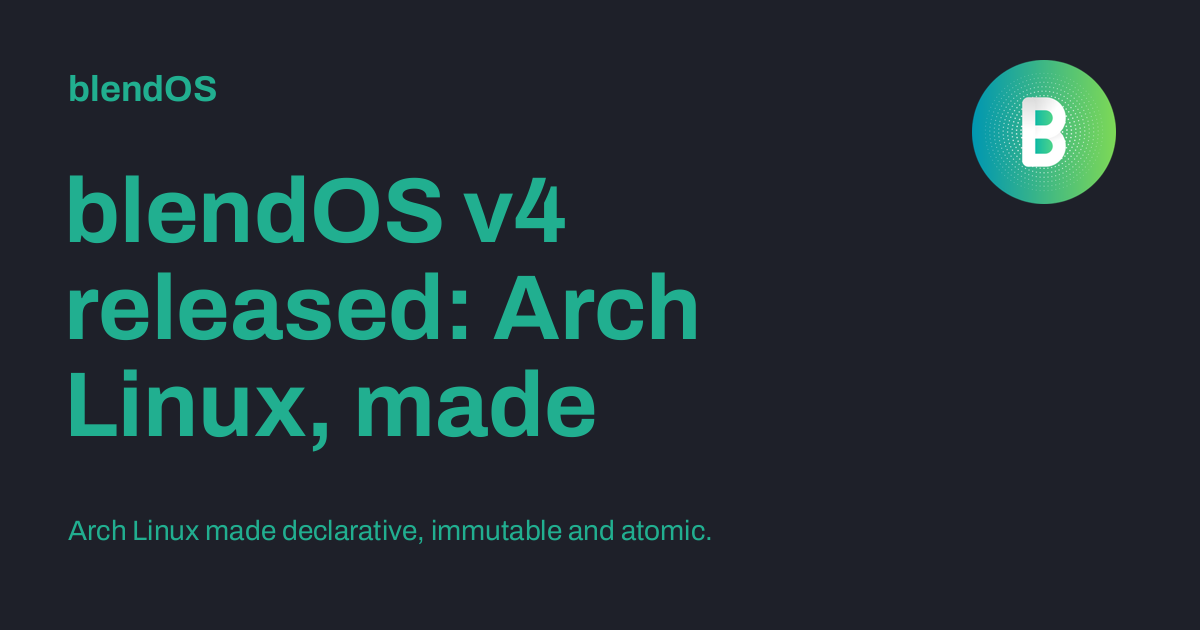A very dumb question probably, but I’m new to using Linux so I lack a lot of understanding: I’m on Bazzite atm. Would there be a simple way to switch to blend OS without wiping everything? Like a rebase? Probably not but I figured it’s worth a shot to ask xD
deleted by creator
Is there a guide or any educational material on this? I’m about to swap to Linux (some fedora distro focused on gaming) and I’m interested in potentially one day swapping to arch after I’ve gotten my toes wet. Doing a bit of extra work and planning ahead to make that easier sounds nice.
deleted by creator
I just wanted to say this is all very confusing. I barely installed Ubuntu on my laptop as a daily driver mostly due to the MS Recall debacle. It’s fine, it’s great. However, reading all the Linux Lemmy posts makes me feel like I’ll never understand. I know all these words and what they mean, just not in an OS context.
Think about it this way: going onto Linux communities and listening to what people say can be like listening to car mechanics chat.
But do you need to know what all of that stuff means to drive your car? Nah. But that info could come in handy, if you wanted to modify your car or something like that.
You don’t need to know what Wayland/X11, PipeWire, GTK4/Qt6, or anything like that is, in much the same way you don’t need to know what PowerShell, Event Viewer, NT kernel, or registry are to use Windows.
- repeat the “Don’t sweat it.”
- Ubuntu is a perfectly fine starting point (the other “beginner distro” that’s commonly recommended is LinuxMint)
- »AFTER« you become comfortable with what you have:
- try familiarizing yourself with the command line
- far more competent than Windows
cmd.exeor PowerShell - !linuxupskillchallenge@programming.dev
- far more competent than Windows
- get overwhelmed with all the distro choices available
- get bitten by the distro-hopping bug (“Gotta try them all!”)
- and then try Distrobox (“ALL the distros at once!”)
- get bitten by the distro-hopping bug (“Gotta try them all!”)
- try familiarizing yourself with the command line
- »THEN« take a look at immutable distros
- “immutable distro” is a catch-all term that embraces several concepts
- immutable – the root filesystem is set to read-only – makes it harder to mess up your system
- declarative – your hardware and packages and configs are declared in a master configuration file
- atomic / transactional – updates are checked as they’re applied, if it fails, it gets rolled back to a previous “safe state”
- container / sandbox – ex. Flatpak or Docker or OCI – apps are isolated in their own sandbox and not allowed to mess up anything else
- “immutable distro” is a catch-all term that embraces several concepts
Welcome to the Linux community. :)
You will probably never understand everything about Linux and all of its included and associated systems. That’s completely fine, no one does! That’s why we are many, and it’s what asking for advice or help is for. You can just learn whatever interests you at your own pace, and know that there will always be interesting things you haven’t seen yet.
don’t worry. this probably isn’t for you… yet… anyway, why did you install ubuntu??? who misguided you? you should have gone linux mint DE, mx linux, Fedora or something like that. Ubuntu was great… 15 years ago. Sorry if I sound too hard… take it with a laugh 😁
😇do you know how to add repos to atp? That’s pretty important, or you may end up installing .dep manually, which I not recommend for people that want a OS that just works





